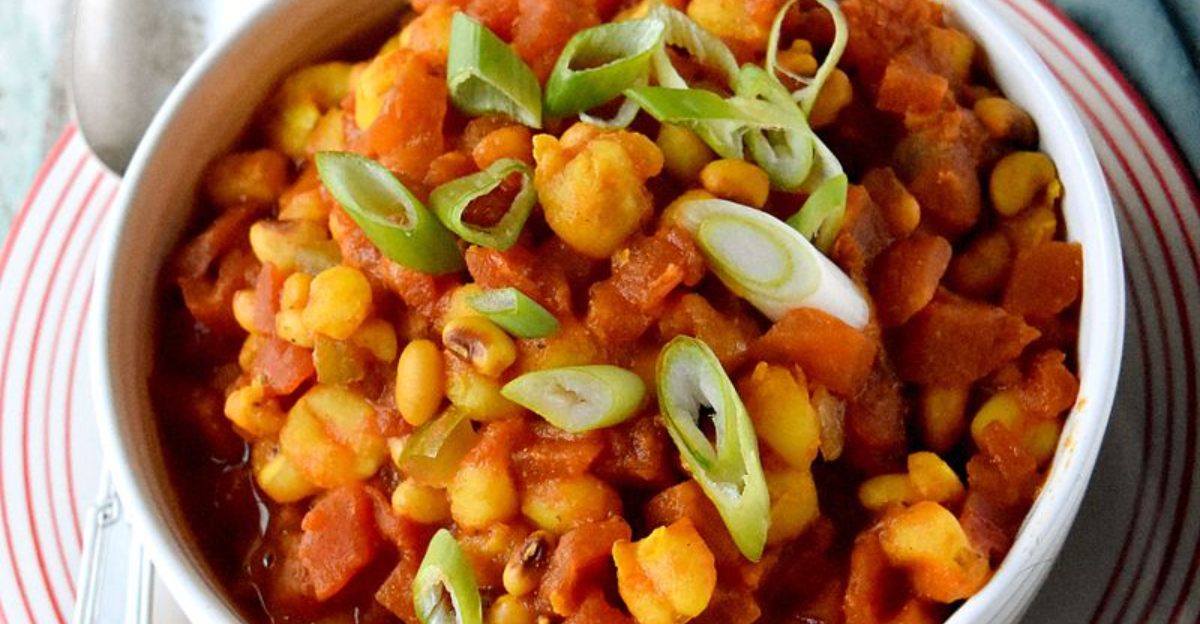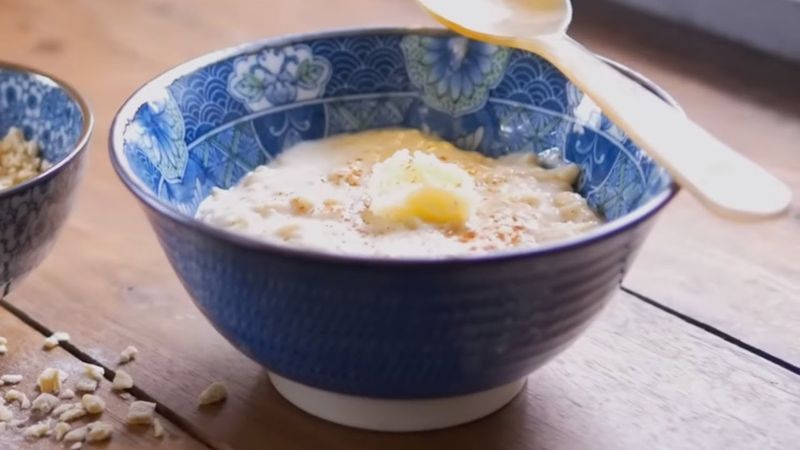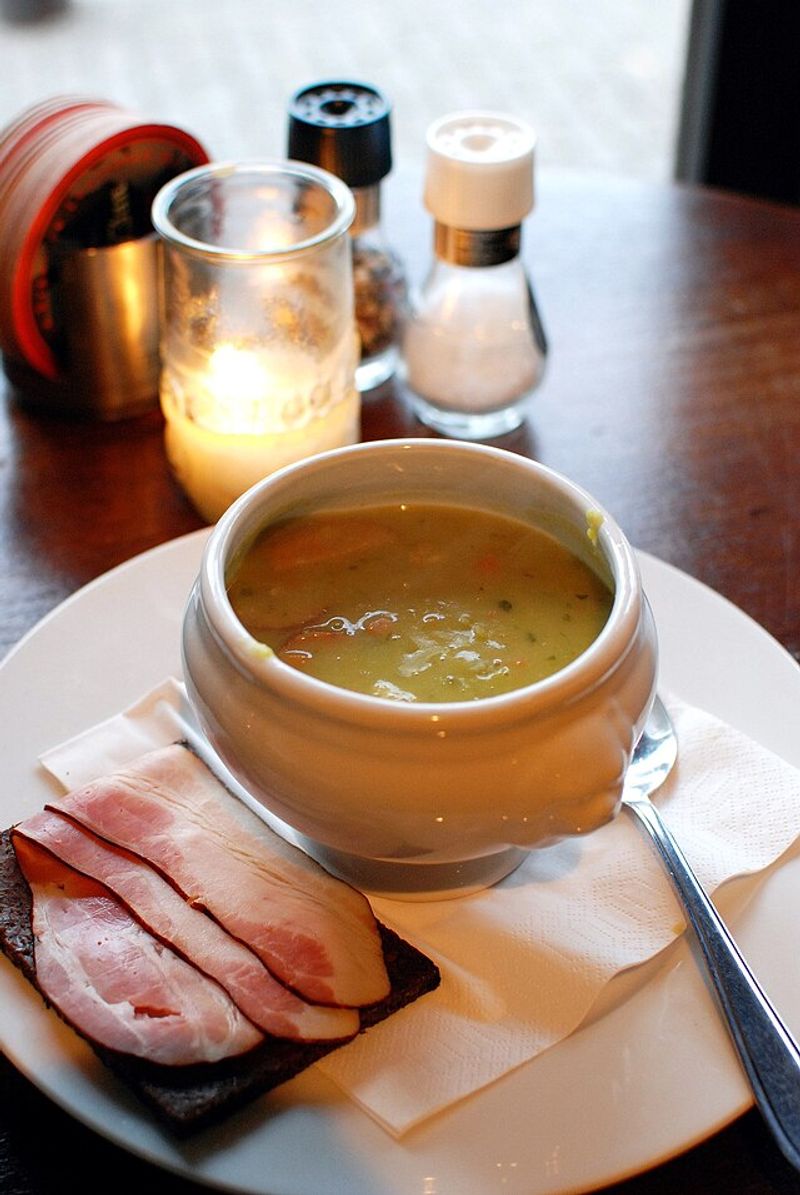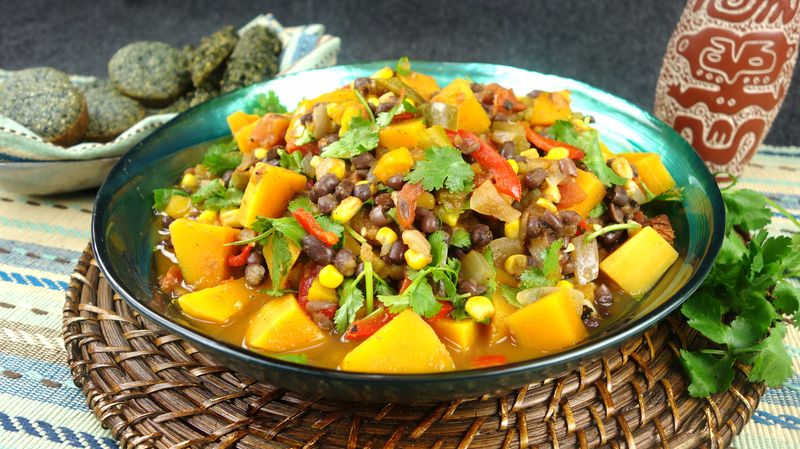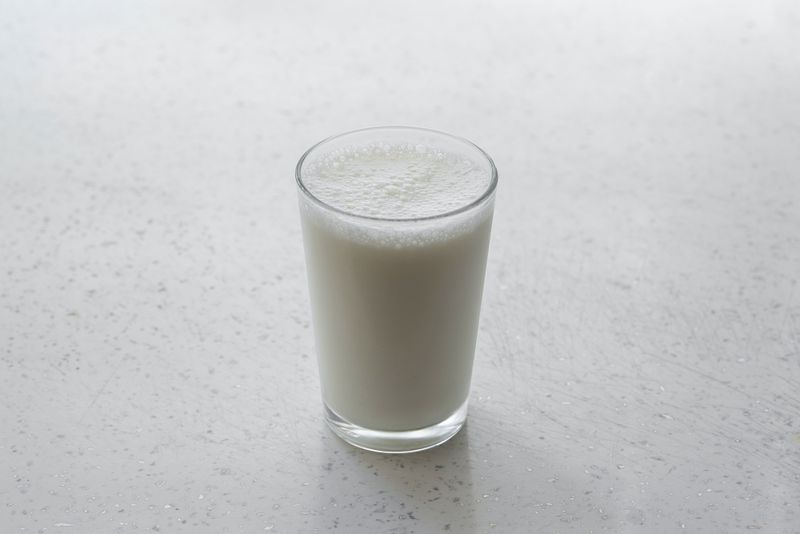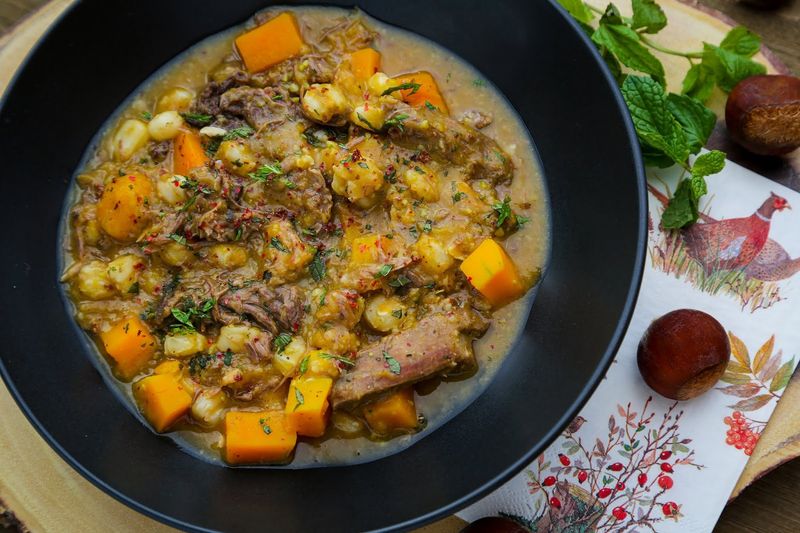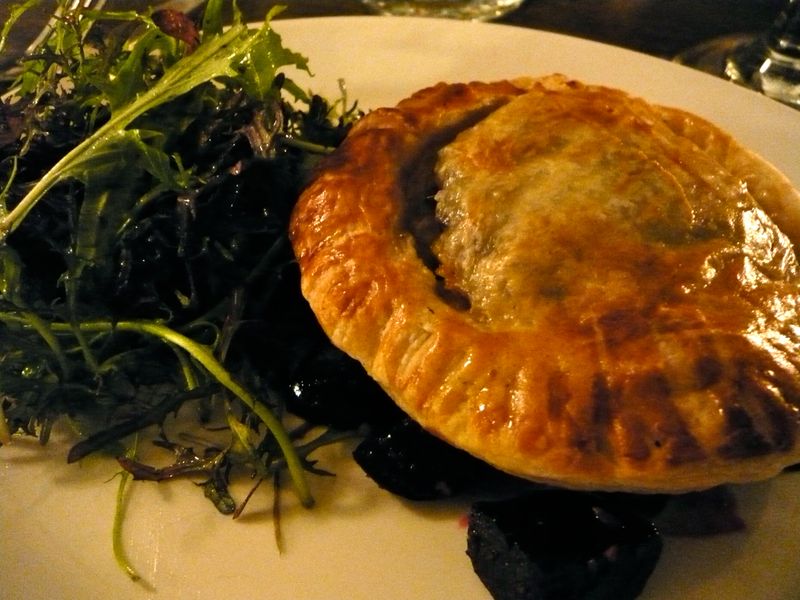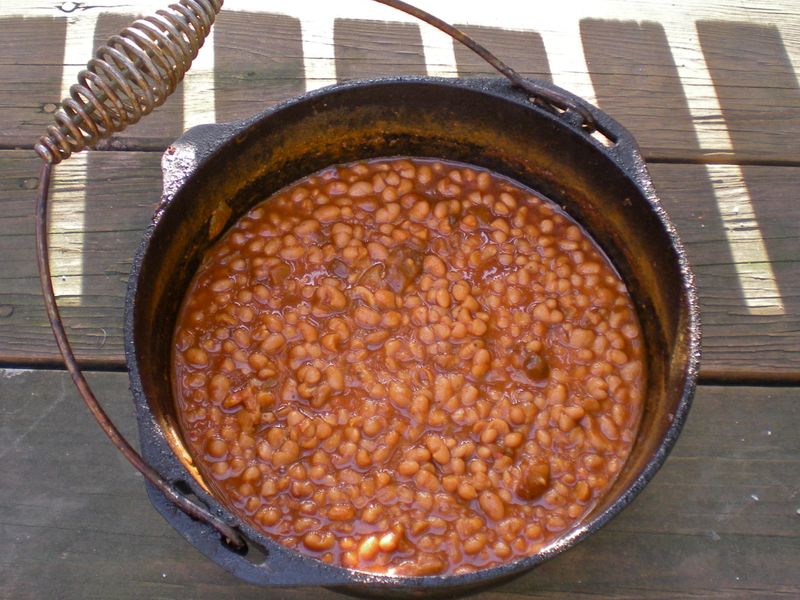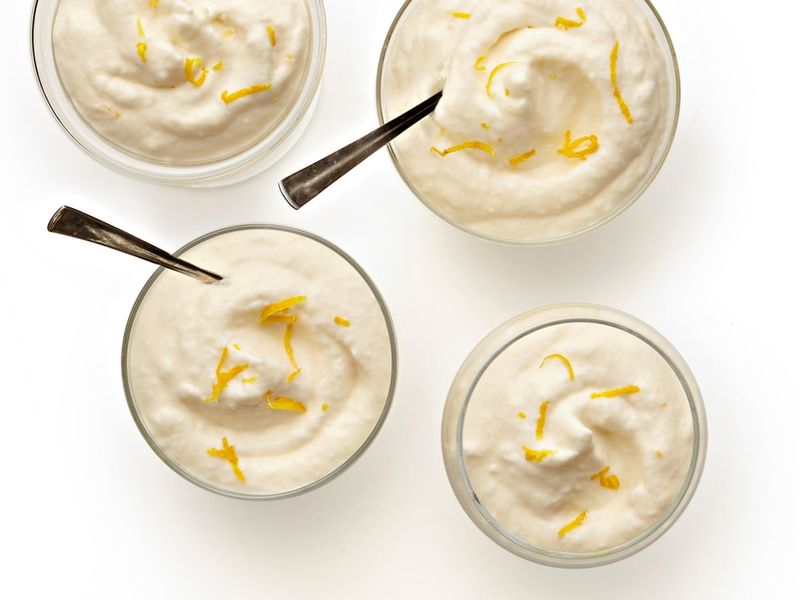When European settlers first arrived on American shores, they faced the daunting challenge of feeding themselves in an unfamiliar land. Their survival depended on adapting traditional cooking methods to new ingredients, often with guidance from Native Americans. The meals that sustained these early colonists tell a fascinating story of innovation, adaptation, and cultural exchange that shaped American cuisine for centuries to come.
1. Hasty Pudding: The Morning Staple
Nothing filled colonial bellies quite like hasty pudding. This simple cornmeal porridge, cooked until thick and creamy, earned its name from how quickly it could be prepared when hungry mouths needed feeding.
Sweetened with whatever was available—molasses, maple syrup, or honey—it provided essential calories for long days of farming and building. Wealthier families might add butter or dried fruits for extra flavor.
Native Americans taught settlers the wonders of corn, transforming this indigenous grain into the backbone of colonial nutrition. Many families ate it twice daily, sometimes letting leftovers solidify overnight to be sliced and fried for breakfast.
2. Pease Porridge: The Nine-Day Wonder
Remember the nursery rhyme “pease porridge hot, pease porridge cold, pease porridge in the pot, nine days old”? This wasn’t just a children’s song but a reflection of colonial reality.
A hearty mixture of dried peas, herbs, and sometimes salt pork, this thick stew simmered for hours in iron pots hanging over hearth fires. Families would eat from the same pot for days, adding water as needed and letting the flavors deepen with time.
The dish’s staying power made it perfect for busy colonial households where daily cooking wasn’t always possible. Some historians believe the nine-day reference wasn’t exaggeration—the high salt content and regular reheating kept bacteria at bay.
3. Johnnycakes: Portable Frontier Food
The original travel food, johnnycakes fueled America’s westward expansion. These simple cornmeal flatbreads could be prepared quickly and carried easily during long journeys.
Native Americans taught settlers this cooking technique, though they called them “journey cakes” initially. The name evolved as colonists adopted the dish into their daily lives.
Cooked on hot stones or griddles, these golden discs required minimal ingredients—just cornmeal, water, and a pinch of salt. Travelers would cook batches before setting out, wrapping them in cloth for eating days later. Some frontier families survived entire winters on johnnycakes when other food supplies dwindled.
4. Succotash: The Three Sisters Dish
Born from Native American agricultural wisdom, succotash combined the “three sisters”—corn, beans, and squash—that were planted together in companion gardens. This nutritionally complete meal sustained countless settlers through harsh winters.
The Narragansett word “msíckquatash” meant “boiled corn kernels,” though colonists quickly added their own touches. Some versions included bear fat or salt pork for flavor, while others incorporated foraged nuts or wild onions.
What made succotash remarkable was its perfect nutritional balance. The corn provided carbohydrates, beans contributed protein, and squash delivered vitamins—a complete meal in one pot that prevented the scurvy and malnutrition that plagued many early settlements.
5. Clabber: Sour Milk Sustenance
Before refrigeration, spoiled milk wasn’t wasted—it transformed into clabber. This thick, yogurt-like substance formed naturally when raw milk soured in warm weather, creating a protein-rich food that sustained many backcountry families.
Anglican missionary Charles Woodmason famously noted how Ulster-Scots settlers lived “wholly on butter, milk, clabber.” Far from being considered inferior, this fermented dairy product was valued for its tangy flavor and preservation qualities.
Families would top clabber with molasses, nutmeg, or cinnamon for breakfast. The naturally occurring beneficial bacteria made it similar to modern yogurt, providing probiotics before the term existed. Some settlers considered it a remedy for digestive ailments.
6. Venison Stew: The Hunter’s Reward
When winter threatened food supplies, colonial hunters took to the forests. The resulting venison stew transformed lean deer meat into a meal that could feed entire families for days.
Unlike modern versions, colonial venison stew contained whatever vegetables were available—typically turnips, parsnips, or dried peas. The meat was often smoked or salted before stewing to extend its usability.
Hunting provided crucial protein when domestic animals were too valuable to slaughter. Native Americans taught settlers effective tracking techniques and how to use every part of the deer—the hide for clothing, bones for tools, and even hooves for glue. This resourcefulness reflected the “waste not, want not” philosophy essential to colonial survival.
7. Pigeon Pie: The Lost Delicacy
Hard to imagine today, but passenger pigeons once darkened American skies by the billions. Colonial cooks transformed these abundant birds into savory pies that graced tables from humble cabins to governor’s mansions.
Children would trap the birds using simple nets or even knock them from low branches with sticks. The meat, similar to dark chicken, was baked in pastry shells with herbs, root vegetables, and sometimes dried fruits.
Pigeon pie appeared in early American cookbooks like Amelia Simmons’ “American Cookery” (1796). Tragically, this culinary staple vanished forever when the last passenger pigeon died in captivity in 1914, hunted to extinction by commercial operations that supplied urban markets.
8. Baked Beans: The Sabbath Solution
Religious observance shaped colonial cuisine in unexpected ways. Puritan Sabbath rules forbade cooking on Sundays, so Saturday’s dinner needed to last through the holy day—enter the slow-cooked baked beans.
Ceramic bean pots would nestle in dying embers Saturday evening, allowing families to return from lengthy Sunday services to a hot meal requiring no additional work. Native Americans introduced colonists to beans, but settlers added molasses—a byproduct of the Caribbean sugar trade—creating the sweet-savory profile we recognize today.
Every New England family had their own recipe, typically featuring small white beans, salt pork, and sweetener. The dish became so associated with Boston that the city earned the nickname “Beantown.”
9. Syllabub: The Special Occasion Treat
Not all colonial fare was purely practical. For celebrations, settlers prepared syllabub—a frothy dessert-drink that showcased rare ingredients like sugar and wine.
The most authentic preparation involved milking a cow directly into a bowl containing cider or wine! The alcohol caused the cream to curdle slightly, creating a naturally whipped texture without modern tools. Martha Washington’s personal cookbook contained a syllabub recipe, suggesting its popularity even in elite households.
Reserved for weddings, Christmas, or harvest celebrations, syllabub represented a momentary escape from daily hardship. Some colonial versions included citrus zest or rosewater—luxurious flavors that connected settlers to the refined European traditions they’d left behind.
10. Samp and Beans: The Indigenous Influence
When Tisquantum (Squanto) taught the starving Pilgrims to plant corn, he also introduced them to samp—coarsely ground hominy cooked with beans and fatty meat. This protein-rich combination became a cornerstone of colonial nutrition.
The dish’s name comes from the Narragansett word “nasàump,” meaning cornmeal mush. Settlers prepared it by soaking corn kernels in lye water (made from wood ash) to remove the hulls before pounding them into coarse pieces.
Roger Williams, founder of Rhode Island, wrote extensively about samp, noting how Native Americans would travel with bags of the dried mixture. The simple combination provided complete protein through complementary amino acids—nutritional science the colonists benefited from without understanding.
